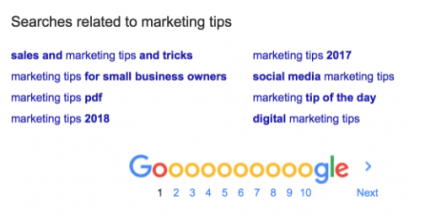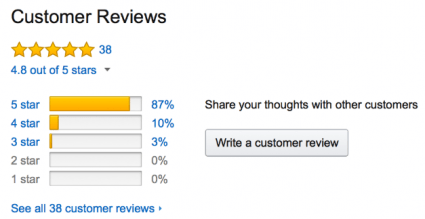Even if you created a product that will be useful to many people, it may as well not exist if it doesn’t show up on search engine results pages (SERPS). All your efforts can fall to the wayside if there is no incoming traffic to see your site.
Fortunately, there are ways to improve your product pages ranking, so that everyone searching for a similar product can find it. In this article, we’ll share four ways that you can improve the ranking of your product pages, which can result in higher revenue.
Target the Right Keywords
Start by providing a complete, detailed explanation of your product. The content used in this section will help you rank higher for relevant keywords. Focus on doing some keyword research to find powerful search terms to use in the product title and brainstorm on what your potential customers are looking for online.
A good way to do this is by searching for a relevant keyword and scrolling down the first page of Google to find related searches. People are using those keywords to find products like yours online.

Do not repeat the same keywords in different product titles since you do not want your product pages competing against each other for a higher ranking. Use tools like Google Adwords Keyword Planner to discover your target keyword search volume and get more keyword ideas. You’ll also get data regarding competition level and average cost-per-click (CPC) if you were to advertise on Adwords.
Another great way to find keywords that are relevant to your users is by finding trending topics and hashtags on social media. For instance, Instagram and Twitter are especially useful to find this information since users actively apply hashtags to their posts.
If you are going to include social media in your marketing strategy, we recommend you perform hashtag research on every single topic related to your business. For example, if you are a boutique located in Miami, the topics of research could be fashion, outfits, boutique, Miami, and many more. Create a product description that addresses the most frequently asked questions and provides useful content that internet users will value and appreciate.
Create Backlinks to Your Site
Backlinks are outside links pointing back to your site. They give authority to your site and let search engines know that your page is worth visiting. Note that not all backlinks provide the same value. Links from websites with high domain authority (high traffic sites) will help you rank higher and faster than websites with low authority.
For example, if NBC News features your website in one of their articles with a link back to your site, you’ll have a much better chance of gaining traffic than if a new, less established website runs a story about you. See the NBC News domain authority below:
 They have 95 out of 100 in domain authority. Being featured on their site would be a huge help in terms of Search Engine Optimization (SEO). I used Moz Link Explorer to find this data. Using the same tool, you can also view backlinks, link analysis and competitive research that will help your site.
They have 95 out of 100 in domain authority. Being featured on their site would be a huge help in terms of Search Engine Optimization (SEO). I used Moz Link Explorer to find this data. Using the same tool, you can also view backlinks, link analysis and competitive research that will help your site.
Another great way to get backlinks is to have featured or guest articles posted on another website or social media profile. Having a social media presence will also help you tap into another user’s following to gain brand awareness. When choosing an influencer, rather than focusing on the number of followers, evaluate their engagement rate to verify their following is real.
Look for influencers that match your brand authority. For example, if you sell books online, look for someone who is famous for being an advocate for the written word or an enthusiast of great books. This means that their social media following is like-minded, which makes it likely that they’ll be interested in your brand as well.
Note: Make sure to get dofollow links; nofollow links provide no SEO juice.
Use Meta Descriptions Title Tags and Image Tags
HTML tags help search engines understand what is on a web page. The most common ones are meta titles and meta descriptions. They are both limited by characters and have a special “formula” for best practices.
Title tags need to be 50-60 characters long and include the keyword towards the front of the title. Meta descriptions appear below the title and should be 155 characters long. They don’t affect SEO directly, but they make an impact on click-through rates (CTR), which can indirectly help with SEO. The higher the CTR, the higher the ranking position you will receive.
Customer Reviews
Online consumers seek out product reviews to gain confidence before making a purchase, and search engines give higher rankings to sites that contain a decent amount of reviews.
Encourage your customers to write reviews and send them a friendly reminder or an incentive to leave one on the site. Not all of them will do you the favor, but many customers will, especially if they love the product or have a great buying experience. You just have to give them the opportunity to do so.

Moreover, if your product or service provides a unique value, customers will want to write a review out of their own loyalty and goodwill. Of course, they are also very likely to leave a bad review if your product doesn’t meet expectations or takes too long to arrive. Luckily, there are some smart strategies for turning negative reviews into a positive experience.
These four relevant and useful steps are ones that eCommerce owners can implement now in order to improve the ranking of your product pages. Invest the time for your site needs and watch your product pages move up in the SERPs. Follow these steps and let me know how that goes by sharing a comment!






Responses